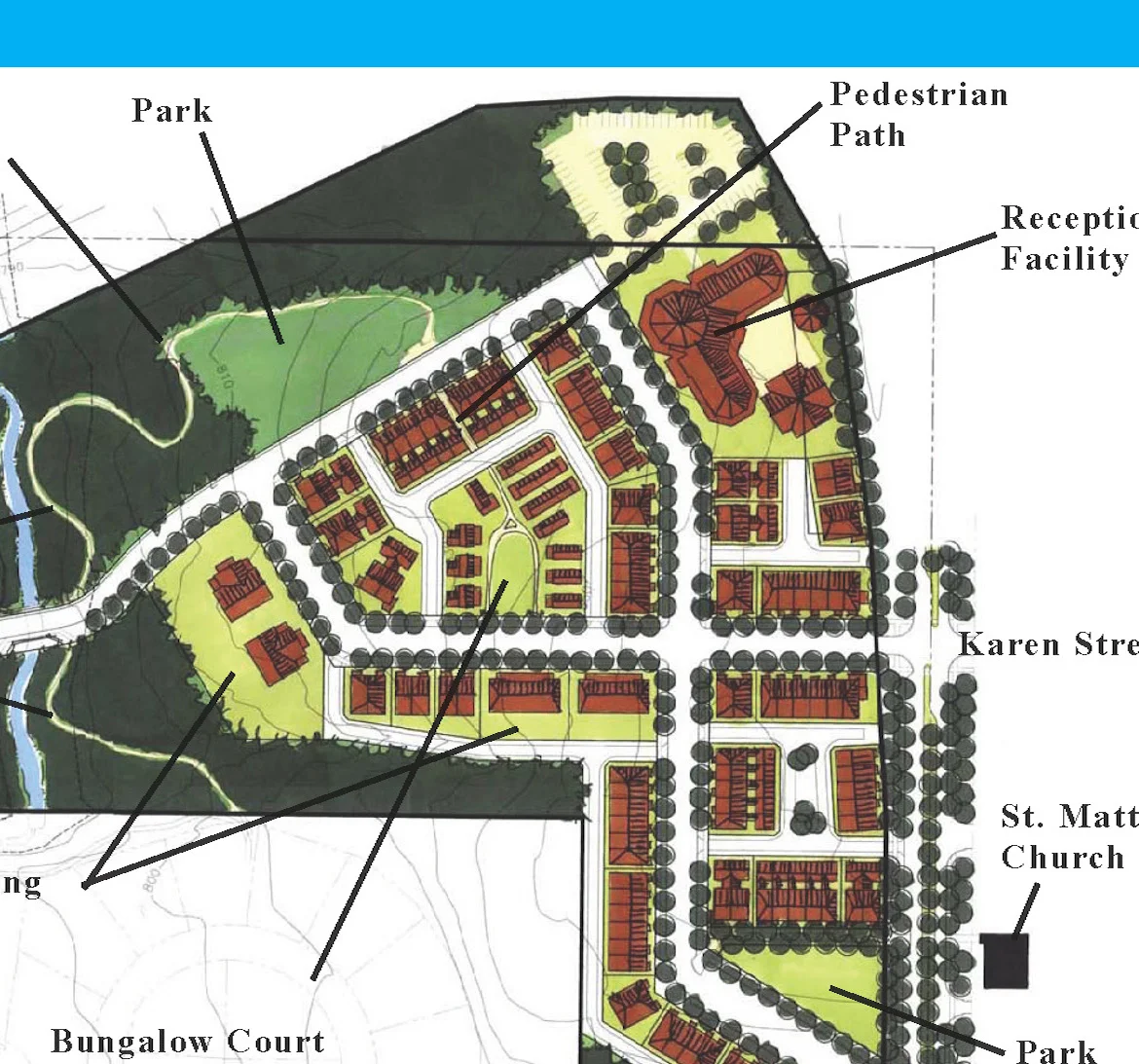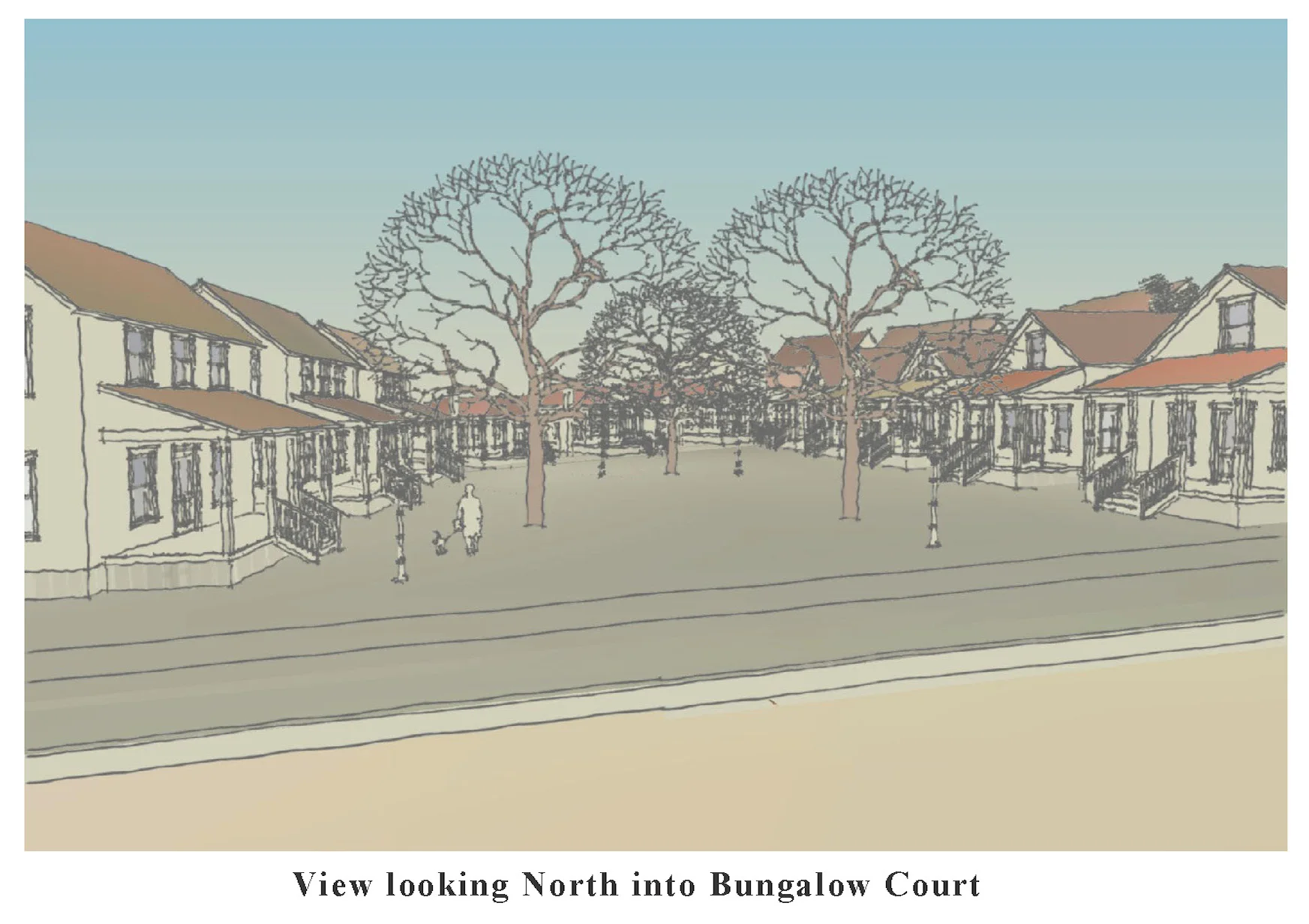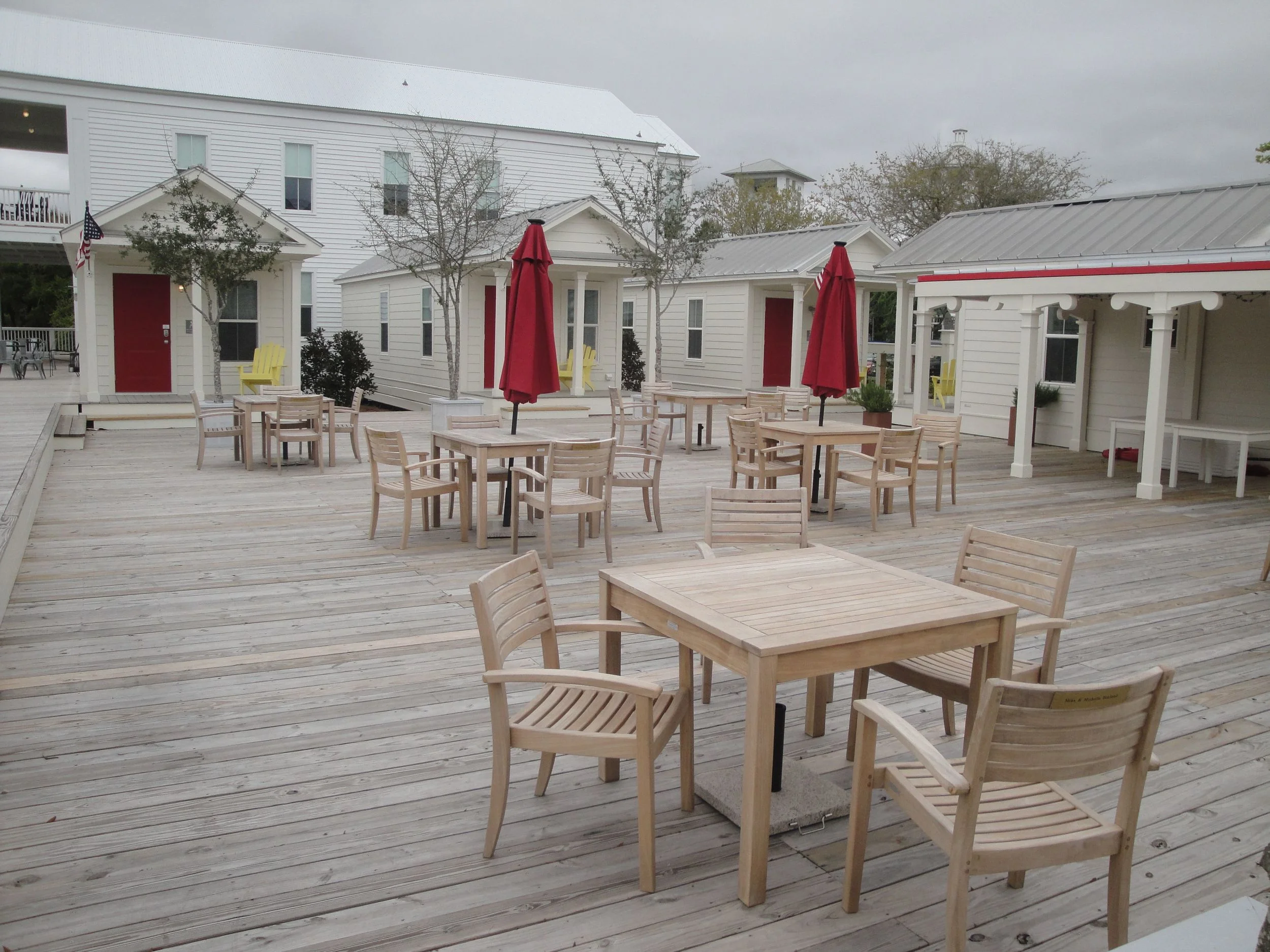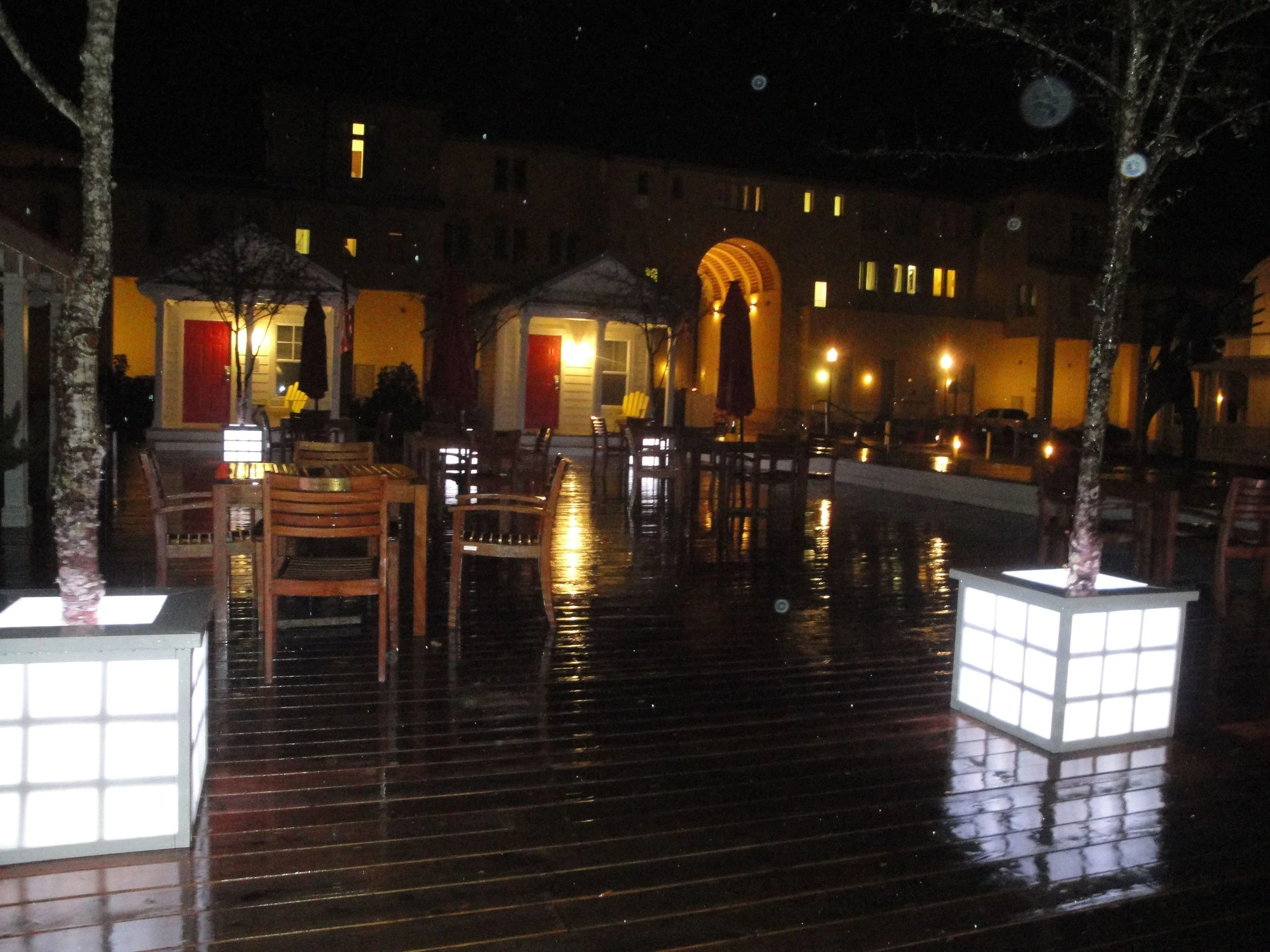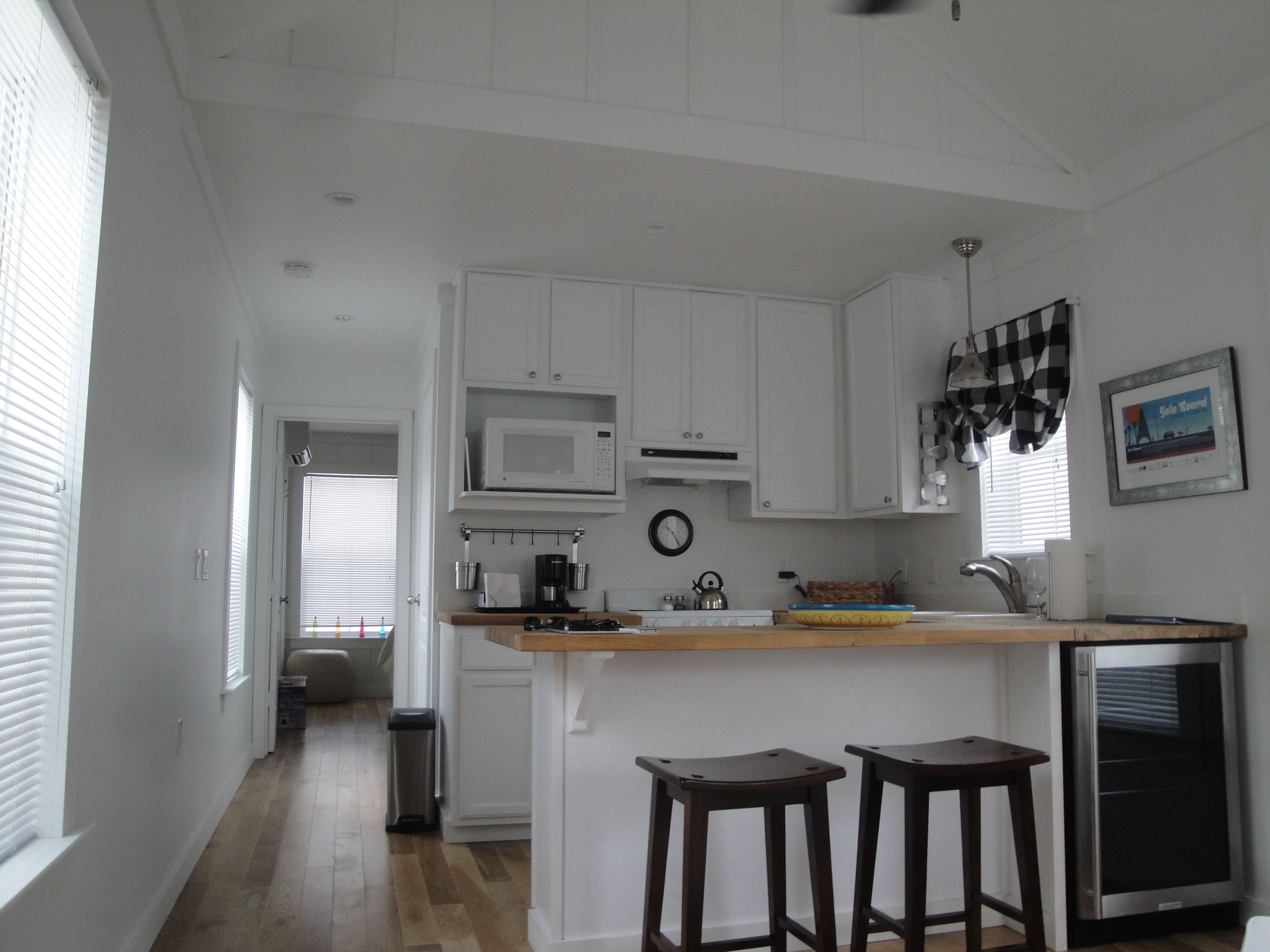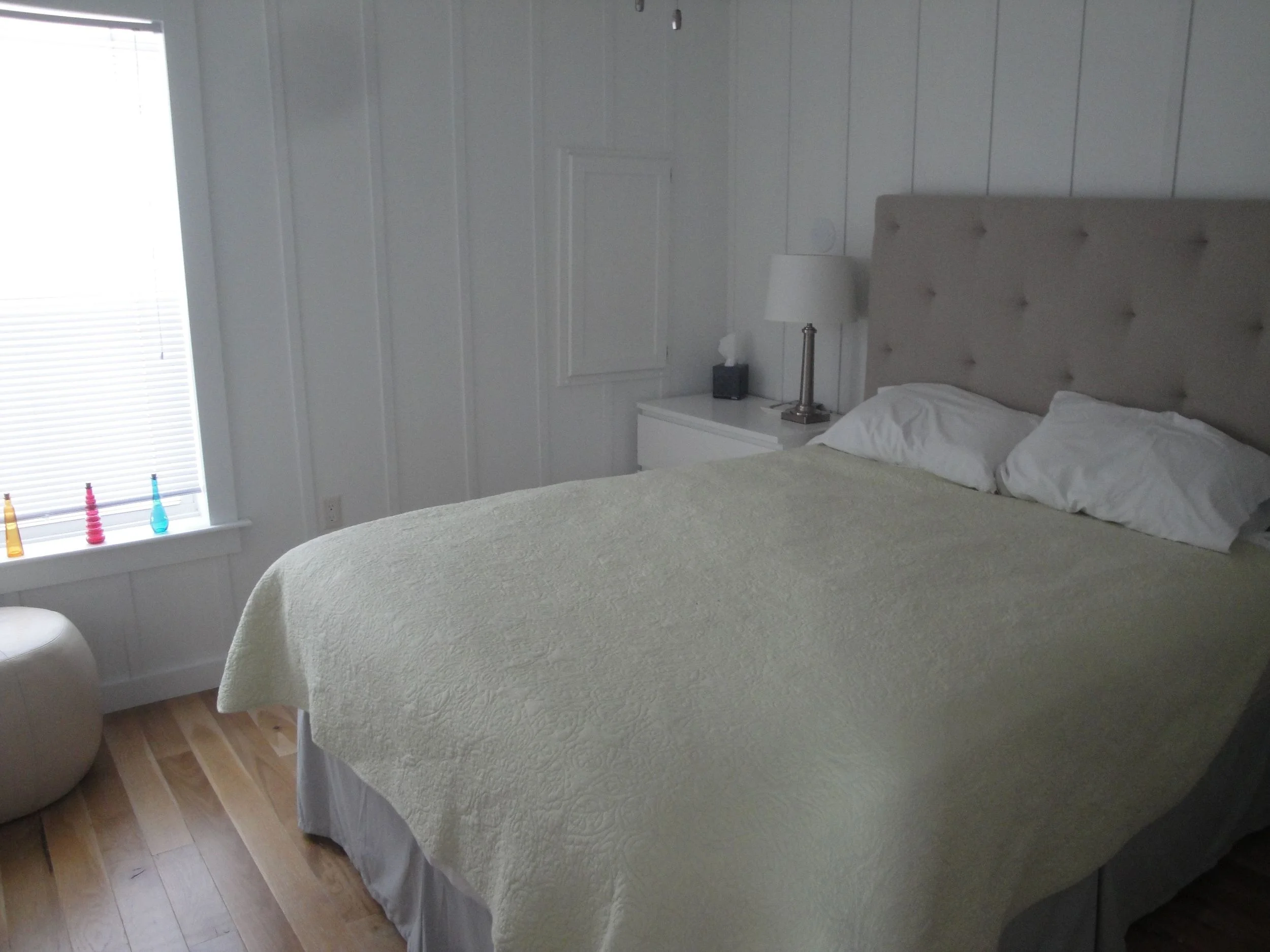Last week, we had the good fortune to spend a few nights in Seaside, FL in the relatively new Academic Village. For a little background on the cottages and their construction, there's a blog here that showed some of the process.
Spending a few days in these cottages is not just a great vacation, but also a great window into a number of thoughts on architecture and planning. [Sidebar: this is the part where I give my apologies to all of the spouses or companions of architects when they travel.] The cottages were part of the "Katrina Cottage" collection that were developed by designers following the devastation of Hurricanes Katrina and Rita in 2005. The original motivation for the cottages was to provide a well-designed, affordable alternative to the FEMA trailers that are commonly used for temporary housing. The trailers serve an obvious, immediate need but also have been plagued with problems. Also, while they're supposed to be temporary they've commonly been used for years after a disaster. One final note: they're not cheap. Here's a good summary of the design ideas from the time.
It didn't take long for the cottage idea to blossom into an entirely different way to look at affordable housing. After all, if these can be produced inexpensively and used for temporary housing, why not also for modest, affordable housing. A number of other architects were working in similar veins for a while, such as Ross Chapin, and the tiny house movement went mainstream.
Architect Dhiru Thadani's sketch of the layout for seven cottages.
Back to Seaside. Our stay in one of the one-bedroom, one-bath cottages was great. No doubt the cottage would be tight to live in permanently for two people, but for one person it's very nice. The cottages easily illustrate the advantages of some thoughtful design: it's light and airy enough that it feels much bigger than it actually is; the outdoor space essentially extends the living room and makes it live larger; since these are arranged into a nice little courtyard, the front porch actually has a nice view, thus encouraging more use.
Once again the cottages show how a resort town like Seaside can be a laboratory for so many other big ideas. It's not at all hard to imagine little groups of cottages like this being employed in neighborhoods around the country. They're cheap, simple and attractive. For one or two-person households, especially for someone that doesn't want a lot of "stuff," they work very well. And they can create a sense of mini-community for the people that live there.
Historic cottage court in Pasadena, CA
Of course, like all things in design this isn't particularly new. Most of our cities have some version of cottage courts or bungalow courts from an earlier era. A number of New Urbanist designers have been employing the idea for 20 years. The twist here is that these push the envelope on size even further than what we may have tried in the 90's or early 2000's, while still providing great livability. As a result, it really helps address the affordability curve, which is so difficult in new construction.
Before the real estate crash, a number of us were working with clients to use these tiny cottages in new projects, since the advantages were so intriguing. As designers, we liked how these courts can be used for sites that sometimes have challenges - an odd size or shape, fronts on two streets, difficult topography, etc. Our developer clients were interested because it enabled them to serve a consumer who wants small and cheap, while not detracting from the neighborhood. And since they are so small, a developer can also put quite a few of them on one lot - a nice incentive.
Like all good ideas, I feel obliged to mention to use this in moderation. Any good thing done to excess can turn bad (I think my mom may have given me that advice) and the same is true of these cottages. In other words, I would not advocate a typical block having three or four cottage courts like this, or whatever ratio might start to make it feel like a large project. These kinds of courts have tremendous potential to help with affordable, livable housing, but are not silver bullets. Then again, nothing is. Some more photos of the Seaside cottages below:
If you got value from this post, please consider the following:
- Sign up for my email list
- Like The Messy City Facebook Page
- Follow me on Twitter
- Invite or refer me to come speak
- Check out my urban design services page
- Tell a friend or colleague about this site


